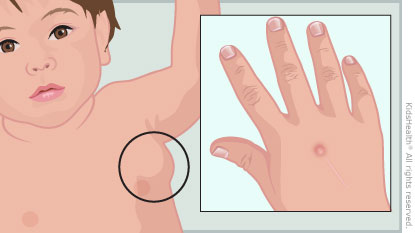- Parents Home
- Para Padres
- A to Z Dictionary
- Allergy Center
- Asthma
- Cancer
- Diabetes
- Diseases & Conditions
- Doctors & Hospitals
- Emotions & Behavior
- First Aid & Safety
- Flu (Influenza)
- Food Allergies
- General Health
- Growth & Development
- Heart Health & Conditions
- Homework Help Center
- Infections
- Newborn Care
- Nutrition & Fitness
- Play & Learn
- Pregnancy Center
- Preventing Premature Birth
- Q&A
- School & Family Life
- Sports Medicine
- Teens Home
- Para Adolescentes
- Asthma
- Be Your Best Self
- Body & Skin Care
- Cancer
- Diabetes
- Diseases & Conditions
- Drugs & Alcohol
- Flu (Influenza)
- Homework Help
- Infections
- Managing Your Weight
- Medical Care 101
- Mental Health
- Nutrition & Fitness
- Q&A
- Safety & First Aid
- School, Jobs, & Friends
- Sexual Health
- Sports Medicine
- Stress & Coping
Cat Scratch Disease
Also called: Cat Scratch Fever
What Is Cat Scratch Disease?
Cat scratch disease is caused by bacteria (a type of germ). Kids can get the disease when an infected cat or kitten scratches or bites them or if the animal's saliva (spit) splashes into their eye. It’s usually a mild illness.
What Causes Cat Scratch Disease?
Bartonella henselaebacteria cause cat scratch disease. They live in infected cats' saliva, but don't make the animals sick. Fleas spread the bacteria between cats.
What Are the Signs & Symptoms of Cat Scratch Disease?
The first sign of a cat scratch infection is a blister or a small bump several days after the scratch or bite. It may look like a bug bite. Within a couple of weeks of a scratch or bite, one or more close to this area will swell and become tender.
These swollen lymph nodes appear most often in the underarms or neck area. They range in size from about ½ inch to 2 inches in diameter and may be surrounded by a larger area of swelling under the skin. The skin over them can get warm and red.
In most kids, swollen lymph nodes are the main symptom of the disease, and the illness is often mild. If other symptoms happen, they might include fever (usually lower than 101°F or 38.3°C ), tiredness, loss of appetite, headache, rash, sore throat, and an overall ill feeling.
The swollen lymph nodes usually disappear within 2 to 4 months, but sometimes can last much longer.
Rarely, more serious problems can happen, usually in young kids or people with a weak immune system.

How Is Cat Scratch Disease Diagnosed?
Doctors usually diagnose cat scratch disease by asking questions and doing an exam. During the exam, the doctor will look for a cat scratch or bite and swollen lymph nodes.
Sometimes doctors order tests that can check for cat scratch disease.
How Is Cat Scratch Disease Treated?
Doctors usually treat cat scratch disease with antibiotics. If your doctor prescribed antibiotics, give them to your child on schedule and for as many days as prescribed.
Kids with cat scratch disease don't need to be kept apart from other family members. Let your child rest as needed. If your child feels like playing, encourage quiet play while being careful to avoid injuring swollen lymph nodes. To ease soreness, you can give your child acetaminophen or ibuprofen.
Is Cat Scratch Disease Contagious?
Cat scratch disease is not contagious from person to person. Sometimes more than one case happens in the same family, usually through contact with the same infected animal.
People who get cat scratch disease usually won't get it again.
Can Cat Scratch Disease Be Prevented?
If you think your child got cat scratch disease from your family pet, take your pet to the vet for treatment.
To prevent cat scratch disease, teach kids to avoid stray or unfamiliar cats and kittens. If you have a cat or kitten at home, kids should:
- Avoid rough play so the cat won’t bite or scratch them.
- Wash their hands after handling or playing with the cat or kitten.
Also, keep your house and pets free of fleas (fleas spread the bacteria between cats).
When Should I Call the Doctor?
If your child was diagnosed cat scratch disease, call the doctor if your child gets a high fever, has lots of pain in a lymph node, seems very sick, or has new symptoms.
If your child has been around kittens or cats and has a fever, blister, or swollen lymph nodes, call your doctor for advice.

© 1995- The Nemours Foundation. KidsHealth® is a registered trademark of The Nemours Foundation. All rights reserved.
Images sourced by The Nemours Foundation and Getty Images.
